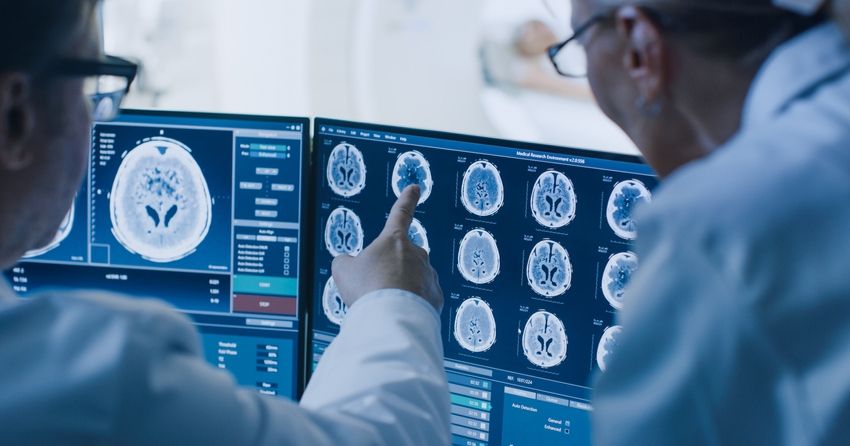Blood Markers of Fatty Acids Linked to Healthier Brain Aging and Cognition

-
Blood tests were conducted on 111 older adults to measure nutrient levels of 52 different dietary nutrients.
-
Memory tests were conducted to assess the cognitive performance of participants.
-
According to the blood test and brain scans, participants who scored higher on the memory tests tended to have larger gray-matter in the brain in addition to higher levels of omega-6, -7 and -9 fatty acids in their blood.
This article was posted by ScienceDaily:
In a new study, scientists explored the links between three measures known to independently predict healthy aging: nutrient intake, brain structure and cognitive function. Their analysis adds to the evidence that these factors jointly contribute to brain health in older adults.
Reported in the Journal of Nutrition, the study found that blood markers of two saturated fatty acids, along with certain omega-6, -7 and -9 fatty acids, correlated with better scores on tests of memory and with larger brain structures in the frontal, temporal, parietal and insular cortices. Watch a video about the research.
While other studies have found one-to-one associations between individual nutrients or classes of nutrients and specific brain regions or functions, very little research takes a comprehensive look at brain health, cognition and broad dietary patterns overall, said Aron Barbey, a professor of psychology, bioengineering and neuroscience at the University of Illinois Urbana-Champaign who led the study with postdoctoral researcher Tanveer Talukdar and psychology research scientist Chris Zwilling. The three co-authors all are affiliated with the Beckman Institute for Advanced Science and Technology at the U. of I.
"Our findings reveal that we can use nutrient biomarkers, cognitive tests and MRI measures of brain structure to account for much of the variation in healthy aging," Barbey said. "This allows us to better understand how nutrition contributes to health, aging and disease,"
The researchers collected data from 111 healthy older adults with MRI structural scans, blood-based biomarkers of 52 dietary nutrients and cognitive performance on tests of memory and intelligence. By combining these measures using a data-fusion approach, the team found associations between dozens of features that appear to work in tandem to promote brain and cognitive health in older adults.
Data-fusion allows researchers to look across multiple data sets to map traits or features that have common patterns of variability, said Talukdar, who tailored this method to incorporate the nutrition, cognition and brain volumetric data.
"We're looking at relationships among all of these together," he said. "This allows us to identify certain features that cluster together."
This overcomes some of the limitations of analyzing individual factors, Barbey said.
"If we just look at nutrition as it relates to brain structures and we don't study cognition, or if we look at nutrition as it relates to cognition and we don't study the brain, then we're actually missing really important pieces of information."
The most obvious features that clustered together in the new analysis involved the size of gray-matter volumes in the frontal, temporal and parietal cortices; performance on tests of auditory memory and short- and long-term memory; and blood markers related to consumption of monounsaturated and polyunsaturated fatty acids. Study participants who scored higher on the memory tests tended to have larger gray-matter volumes and higher levels of markers of omega-6, -7 and -9 fatty acids in their blood. Those who did more poorly on the cognitive tests also had smaller gray-matter volumes in those brain regions and lower levels of those dietary markers, the analysis revealed.
While the study only reveals associations between these factors and does not prove that dietary habits directly promote brain health, it adds to the evidence that nutrition is a key player in healthy aging, the researchers said.
"Our work motivates a more comprehensive picture of healthy aging," Zwilling said. This gives insight into the importance of diet and nutrition and the value of data-fusion methods for studying their contributions to adult development and the neuroscience of aging."
This work was supported by a grant from Abbott Nutrition through the Center for Nutrition, Learning, and Memory at the U. of I.
Story Source:
Materials provided by University of Illinois at Urbana-Champaign, News Bureau. Original written by Diana Yates. Note: Content may be edited for style and length.
Journal Reference:
- Tanveer Talukdar, Christopher E. Zwilling, Aron K. Barbey. Integrating Nutrient Biomarkers, Cognitive Function, and Structural MRI Data to Build Multivariate Phenotypes of Healthy Aging. The Journal of Nutrition, 2023; DOI: 10.1016/j.tjnut.2023.03.016





